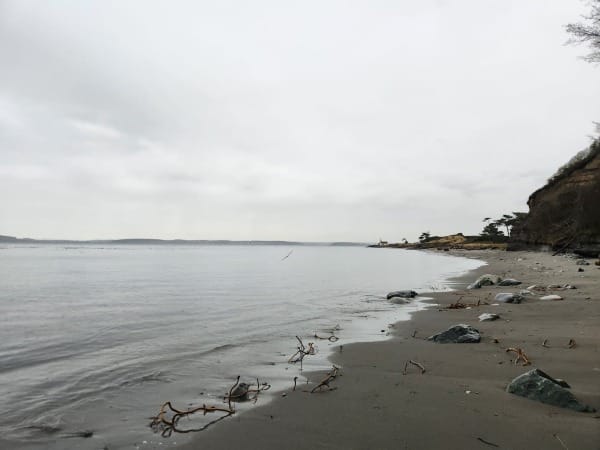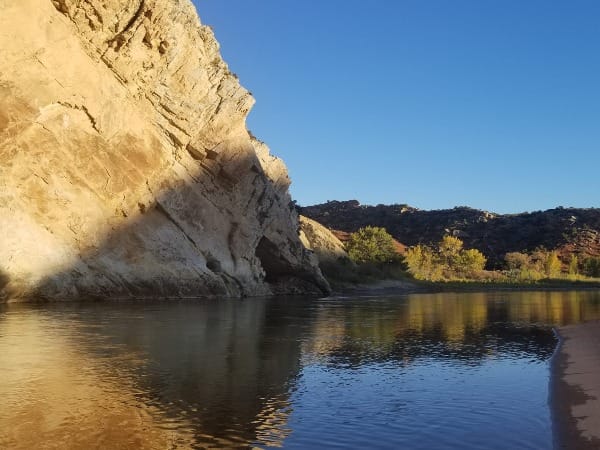Flights into the Wilderness
Views that opened new perspectives

For The Wild Card this week, I am experimenting more with photos to see if I can integrate word and image. This means you’ll want to read, rather than skip, the captions.
I have written before here about my time teaching in the Frank Church-River of No Return Wilderness. In that post, I described how the experience forced me outside my comfort zone. This time, I want to consider the experience from above. Read on!

Taking Bearings is supported by readers. To support my research and encourage my writing, please subscribe and consider becoming a paid subscriber.
Not Nervous?
I've never been a particularly nervous flyer. But then, I'd never been asked to get in a four- or six-passenger plane and fly among the Idaho mountains far beyond roads. It made me pause. But if I was going to teach in the Semester in the Wild program, I'd have to hop in a small plane and be dropped deep in the wilderness at Taylor Wilderness Research Station.




On my first trip, after dropping off a hunter at a private airstrip, my experienced pilot took me toward Taylor. As we headed up Big Creek drainage, he pointed to a small patch of grass, sort of level, hanging off the side of a cliff. Or so it seemed. "That's Soldier Bar Airstrip," he said above the plane noise. My eyes widened.

A month later, in bad weather, I landed there, which ended up being the easiest part of a very uncomfortable flight out of the wilderness.
A few minutes after pointing out Soldier Bar Airstrip, we passed over the research station, turned around, and landed. Although another professor had warned me the landing could be disconcerting because the runway was not straight, there was no need to be nervous. (Once though, we did have to fly back up because a deer walked out on the grassy strip as we prepared to land.)
New Perspectives and Places
Except for that one flight that made me wish for a parachute, I got used to the flights in and out of Taylor. More often than not, it was smooth and even pleasant. Occasionally, the plane bounced a bit, but that always was temporary.
Once, a pilot warned me as we prepared to drop over a ridge. "It's going to get rough." Since he had always seemed imperturbable to me, I prepared for near-certain death. Instead, I felt a mere drop like a roller coaster.




Not many places are so inaccessible. Taylor itself is about 30 miles from the nearest road, so planes are the convenient ways to move. So important and integral are they in this backcountry, the existing airstrips were allowed to remain once this area became part of the National Wilderness Preservation System where such things are typically disallowed. The decision and its continuation remains controversial to some.


Scales
Flying forced me to pay more attention to myself and the surroundings. We can all improve our capacity to attend to the present moment; these plane trips offered great practice. One reason is because every ridge offered a new perspective, if you look. The scale of these mountains—not in terms of height but more their remoteness—forced adjustments of expectations.

Over the five years I participated in the program, I grew to know the research station well. I often focused my attention closely there—the bend in Big Creek, the markings on the nearby cliffs, the sound of wind in the trees, the contrasting colors of bark and leaves and burned trees.
But the literal Over-View from the flights in and out gave me something, too: a way to appreciate the scale of of place and opportunities to practice wide-angled vision.
Closing Words
Relevant Reruns
You can read my earlier newsletter about how teaching in this program required me to stretch beyond my comfort zone here.
I have published two personal essays based on my experiences. This one, published in Weber—The Contemporary West, considers the purpose of education. This one, part of Barzakh Magazine’s special issue “In Nature,” dives deep into this place and its history that goes beyond to become a meditation on time and wilderness itself. (This may be the personal essay I’m most proud of.)
New Writing
No big articles published this week, but something is in the works. Check back next week.
As always, you can find my books, and books where some of my work is included, at my Bookshop affiliate page (where, if you order, I get a small benefit).
Taking Bearings Next Week
Next week is time for The Classroom. In the Northwest, we are commemorating the 50th anniversary of the Boldt Decision. I plan to write a bit about that landmark case. Stay tuned!



Comments ()